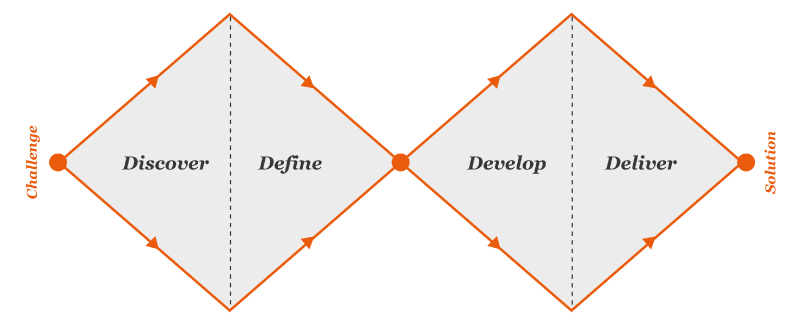A practical example
A friend has told you good things about a local venue, and you want to see it for yourself. You’re in front of the entrance and you notice two standard-sized sheets of black and white paper affixed to the window, which have probably been there for over a year, bearing portions of a menu written in the font you use for documents at the office. There’s also a poster for an event that was held there the previous year. Unbeknownst to you, your brain has already begun storing information, long before you ever take your first bite: in fact, your experience of the club began even before you arrived at the entrance, namely when your friend told you about the place. Now that you’re there, you hope that the entrées taste better than how the entrance looked, but you’re increasingly bothered by the overly intense lighting, which brings out the lacquered colours of the horrible prints on the walls. The message with which you are greeted, disappointing service, the quality and presentation of the entrées, a bill that doesn’t accurately reflect what you ordered, and the attitude of the cashier when you go to pay. This little story is intended to point out the number of elements that make up your experience at the club, the complexity of the journey undertaken by the user of a service, and the number of possibilities for improvement available to those who offer that service.
The of the importance user experience
Design Thinking means designing the user’s experience, and it starts finding out what needs drive the user to take action. The designer of the experience can respond to each of the user’s problems with a range of possibilities, which must be put to the test. Trial after trial, fundamental feedback is acquired, which will help to determine the best possible solution at that given time. Let’s look at another example. Have you ever downloaded an app only to kick yourself for having occupied precious megabytes of your smartphone’s memory with a non-intuitive application that didn’t do what you hoped it would? Don’t worry, you’re not the only one. But above all, the problem doesn’t lie with the app’s user, but rather with those who designed it (poorly). These are design errors, which, if we were to be the ones designing that application, could be resolved using the Design Thinking methods. We would start by researching the users, gathering insights about their needs and problems, and would then choose the problem we want to resolve. Afterwards, we would develop a series of solutions, from the most rational to the most creative, which we would then test on the users themselves.
The basic rules of Design Thinking: 4 D
While we have seen examples of physical and digital environments, there can also be problems with the internal dynamics of working groups, which can therefore be resolved through Design Thinking. The fundamental points of this particular design method are summarised below:
- we place the user at the centre of the design process: the information about the users and belonging to the users serves as the basis for the design. Doing research means interviewing and administering questionnaires, as well as studying any existing or previously tested solutions in order to understand people’s behaviour and emotions (discover)
- from among those that emerged during the research phase, we identify one problem that we want to resolve, based on our abilities and our strategic vision (define)
- we develop a series of solutions: here the use of both vertical/rational and lateral/creative thinking comes into play, which allows us to avoid falling back on pre-existing schemes. For example, the Brainstorming or Crazy eight methods are effective during this phase (develop)
- we conduct quick tests to determine which product/service to focus upon, and we develop it further through prototyping (deliver)
- since our solutions must take into account the user’s needs, the technology possibilities, and the business objectives, we test our product/service in an cyclical manner (meaning that we obtain feedback on the prototypes, and go back to the discover phase)

Design Thinking Applications
More and more companies are applying the typical Design Thinking sequence (discover, define, develop, and deliver), or other similar approaches, like the Lean method (learn, build, measure): while Google has even made a format out of it with Design Sprint, many others have realised that focusing upon the user allows for the creation of a useful and effective product/service, helps optimise investments, and lays the groundwork for continuous improvement. Examples can be seen in the corporate field, in terms of both products/services and internal management, as well as in the field of public-private co-projects, such as those dedicated to the regeneration of public spaces or the improvement of public services. When we think about designing something, we should ask ourselves the following questions:
- am I thinking about the user? (or just my own ego?)
- am I dedicating the necessary time to research?
- am I open to creative solutions, or do I take refuge in that which I already know?
- how can I test a rough prototype of my next product/service?
- how do I receive feedback?
- how can I use the feedback I have received to improve my ideas?
And now think about your work, about your company’s processes, and about the services and products you develop: what role does the user play? How can they be improved? Happy designing! Tommaso Sorichetti https://www.linkedin.com/in/tommaso-sorichetti-uxdesigner/